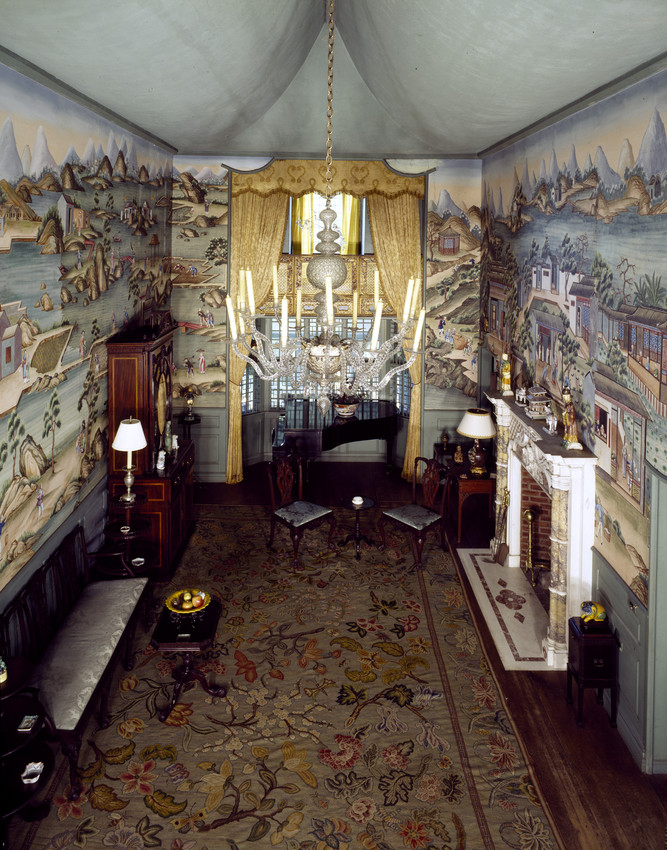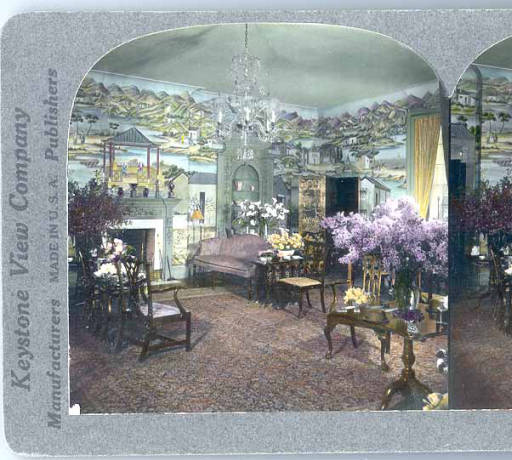From Beauport to Winterthur: Collaboration–and an Altercation–Between Henry Davis Sleeper and Henry Francis du Pont
One of the surprises in leaving Delaware to visit other museums is the way that Winterthur seems to follow us on our journeys. At Beauport, Henry Davis Sleeper’s summer house in Gloucester, Massachusetts, we were struck by numerous commonalities between Sleeper and du Pont’s design visions. From the China Trade Room and Pine Kitchen to the backlit collection of colored glass bottles, installations at Beauport reminded us of similar spots at Winterthur.
Sleeper’s Pine Kitchen, left, as it stands today, and a photograph of Winterthur’s Pine Kitchen from H.F. du Pont’s era, right. Ultimately Winterthur’s Pine Kitchen would be converted into the Kershner Parlor and Kitchen.
Images: Emelie Gevalt, Winterthur Digital Collections.
Sleeper’s China Trade Room, left, and du Pont’s Chinese Parlor, right. It is worth noting that the McCanns, the second owners of Beauport, did make modifications to the Sleeper’s China Trade Room, but it was his idea to create one. In both spaces, the Chinese-themed wallpaper forms the central focus.
Images: Historic New England, Winterthur Digital Collections.
It is unlikely that any of these similarities are coincidental. Du Pont first visited Beauport in 1923 – on the very same trip when he famously visited Electra Havemeyer Webb and was entranced by her display of colorful pink ceramics on a simple pine cupboard – and would soon thereafter declare himself a collector of Americana. As such, Beauport made an appearance in du Pont’s life at a crucial moment during the development of his collecting vision. It is hardly surprising that we should find echoes of the place in the halls of Winterthur.
Displays of glassware at Beauport and Winterthur, respectively.
Images: Emelie Gevalt
Sleeper and du Pont would go on to work together directly. As one of the country’s first professional interior designers, Sleeper aimed to attract more than just admiring social guests with his rooms at Beauport: he was looking for business, using the house as a sort of show room for his eclectic, early Colonial Revival-inspired vision. Du Pont would enlist Sleeper to work with him on his Long Island house, Chestertown, and ultimately, on Winterthur itself.
This second collaboration would be less successful than the first, however. As made evident by letters collected in the Winterthur Archives, Sleeper and du Pont would argue over the cost of the designer’s work, relative to — as perceived by du Pont – his somewhat lackluster participation in the project. In 1931, du Pont wrote to Sleeper: “I really do think $5,000 should be all that you are entitled to…I certainly do feel…that you did not do half as much in the Winterthur house as you did in the Chestertown house.”
A memo from the Winterthur archives, in which du Pont attempts to tally the number of times Sleeper had been “on the job” at Winterthur to date. His mounting frustration is evident in the tone of the note.
Despite this argument, Sleeper’s influence remains apparent in Winterthur’s rooms. And ultimately, du Pont would have an impact on Beauport, as well: when Sleeper died and the house was sold, du Pont would encourage the new owners to keep his fellow collector’s vision intact, preserving the rooms for future museum visitors.








Leave a Reply